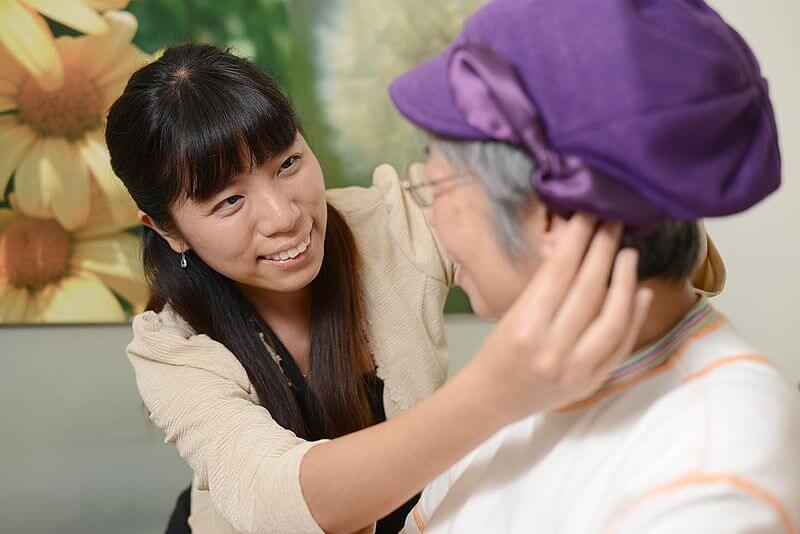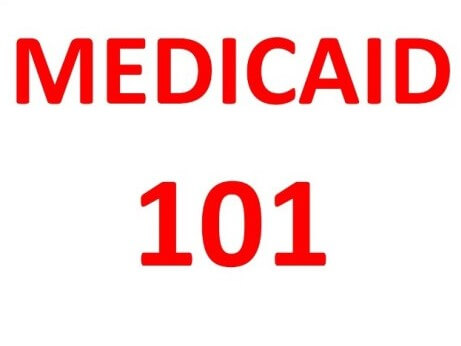
New Year’s Resolution: Create or Update Your Estate Plan
December 27, 2017
Medicaid 101: Part 2 – Medicaid Assisted Living Waiver Program
February 8, 2018This post is the first of a series of blogs that will address eligibility criteria and concepts relating to the Ohio Medicaid program. The blog posts will build on each other to help give you a broad overview of the program and its requirements and benefits.
Let’s start at the top: What is Medicare? How is Medicaid different?
Because the names are similar, the two programs are often confused. One way to remember the difference is that Medicare is generally available to all elderly individuals who require care, while Medicaid is available only to those who need aid because of financial reasons.
Medicare
Medicare is a federal health insurance program for most people 65 and older and for certain people under 65 who are totally and permanently disabled. This program is not means-tested. For a person 65 or older to receive Medicare, he or she must receive Social Security benefits. Persons under age 65 who have been receiving Social Security or railroad disability benefits for at least 24 months are also eligible for Medicare.
To be eligible for Social Security benefits, an individual must have 40 working quarters. These individuals qualify for Medicare Part A with no premium. A person 65 or older who is not eligible for Medicare can voluntarily participate in the program by paying the required premiums for Part A and Part B coverage.
Medicare Part A provides limited coverage for a stay in a nursing home. It covers up to 100 days in a skilled nursing facility. To be eligible for this coverage, the resident must have been hospitalized for at least three days and then be admitted to the nursing home within 30 days of discharge from the hospital. Only skilled nursing services are covered. Typically, skilled nursing services are ordered by a doctor and require the skill of a person such as a registered nurse or a physical therapist.
Although Part A covers 100 days of skilled care, it pays in full for only the first 20 days. The next 80 days are partially covered by Medicare (in 2018, the individual pays the first $167.50 per day and Medicare pays the balance). Beyond 100 days, the individual bears the full cost.
Medicare Part B has a premium, regardless of whether you are eligible for Social Security benefits or voluntarily enroll in the Medicare program. Medicare Part B covers things like outpatient hospital procedures, doctor’s visits, preventative care, and lab tests.
In addition to having Medicare coverage, an individual can purchase a Medicare supplement policy or enroll in a Medicare Advantage plan.
Medicaid
Unlike Medicare, Medicaid is a means-tested program. It provides insurance coverage, as well as in-home, assisted living, and nursing-home benefits.
Medicaid applications are processed by the county Department of Job and Family Services.
Community Medicaid
To qualify for health insurance under the Medicaid program, sometimes referred to as “community Medicaid,” an individual must have gross monthly income of less than $750 per month. An exception to this income standard is eligibility under the MAGI program, which will be addressed in Part 9.
Long-term Care Medicaid
To qualify for long-term care Medicaid benefits, an individual must generally be a resident of the state and be either 65 years old, blind, or disabled. To be eligible for these benefits, an individual must need a nursing-home level of care. This generally means that the individual must need assistance with at least two activities of daily living (“ADLs’), which include bathing, grooming, toileting, dressing, eating, mobility.
Throughout this and future blog posts, we will refer to long-term care Medicaid generally as “Medicaid.”
Medicaid benefits are available to cover the cost of services in a nursing home, assisted living facility, or in home. The criteria discussed below apply to all three types of coverage. However, the assisted living and in-home programs have additional criteria. Those criteria will be discussed in Parts 2 and 3 of this blog series.
Income Criteria
The individual seeking Medicaid benefits must have gross monthly income less than $2,250 per month (in 2018). If an individual’s income is higher than $2,250 per month, he or she can establish a Qualified Income Trust to become income-eligible. A more thorough discussion of Qualified Income Trusts will be in Part 4 of this blog series.
Asset Criteria – Single vs. Married
In addition to meeting the income requirement, an individual must meet certain asset tests to receive Medicaid benefits. The asset tests are different for single individuals and married persons.
For a single individual to qualify for Medicaid, he or she must have countable resources below $2,000. Countable resources do not include the home owned and lived in by the individual and one vehicle used for transportation.
For a married individual to qualify for Medicaid, the couple’s resources must meet the asset test. The county caseworker will look at all of the couple’s resources, regardless of how they are titled, and compare the value to the asset limit. If the couple’s assets are below the limit, the individual seeking coverage (“institutionalized individual”) will be resource-eligible for Medicaid benefits.
Determining the asset limit for a married couple involves very specific calculations. A more detailed analysis of this process will be discussed in Part 6 of this blog series.
Under Ohio law, the healthy spouse (“community spouse”) is entitled to certain protections against impoverishment. In 2018, the community spouse is entitled to keep a portion of the couple’s assets that do not need to be spent on the institutionalized spouse’s care. The community spouse may also be entitled to a portion of the institutionalized spouse’s income. See Parts 6 and 7 for more information.
Other Notes
As many people are aware, an individual cannot simply give away his or her assets and still qualify for the Medicaid program. See Part 5 for a detailed discussion of the five-year lookback period.
Once an individual becomes eligible for Medicaid benefits, his or her cost of care is mostly paid by the Medicaid program. The individual will owe a patient liability (See Part 4 for further discussion) to the facility, and Medicaid will pay the balance. There is no limit to the number of days that the individual can receive Medicaid benefits. If a person is disabled at a fairly young age, he or she could theoretically receive Medicaid benefits for 20 years or more.
If an individual qualifies for Medicaid benefits, he or she could be subject to the Medicaid Estate Recovery Program at his or her death (more information in Part 12).
Additionally, it is possible for an individual or married couple to implement certain estate planning to protect assets for the benefit of the needy individual or the healthy spouse. We will briefly discuss some of these options in Parts 10 and 11.
We hope that this blog series is useful to understanding the basics of the Medicaid program. Of course, each situation is different. It is important that to understand the broad picture, as well as how a course of action will affect the situation at hand. We intend these blog posts to provide general background knowledge. When we meet with potential clients, we can discuss the specific details of the situation.


